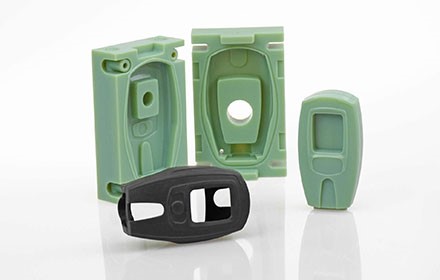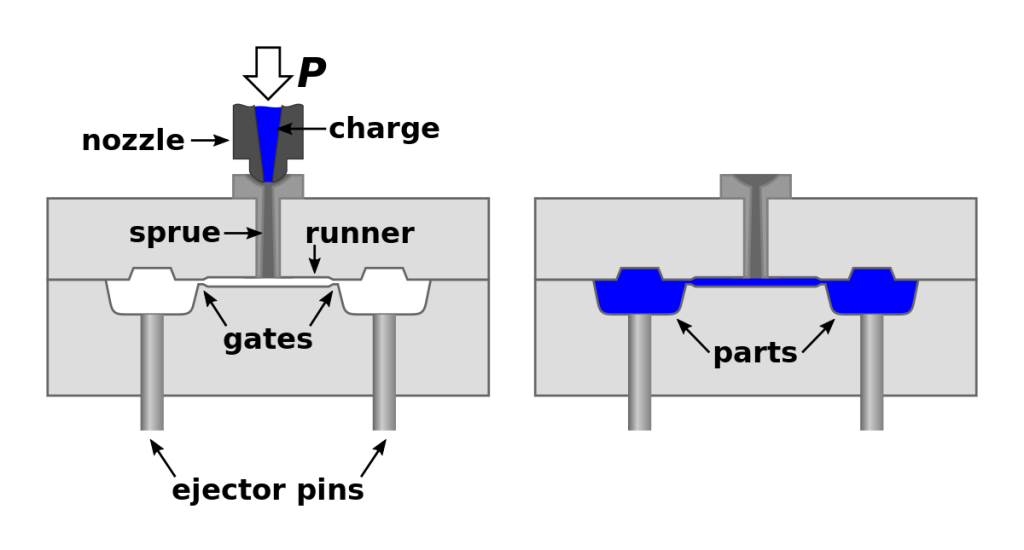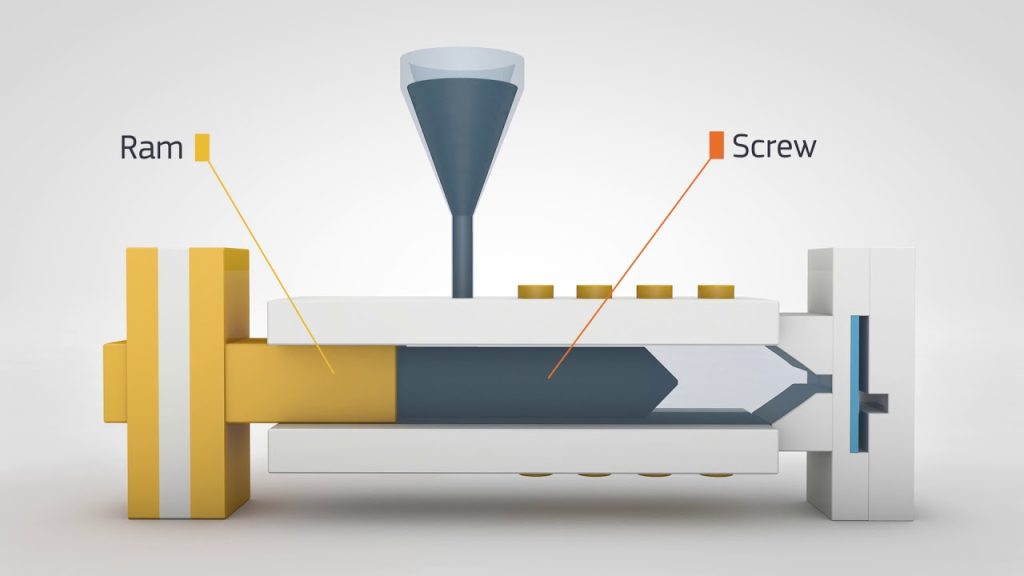Table of Contents
Have you ever wondered if abs can be injection molded? This is a common question among those who are interested in manufacturing plastic products. ABS, or Acrylonitrile Butadiene Styrene, is a popular thermoplastic polymer that is known for its toughness, durability, and resistance to impact. Injection molding is a manufacturing process that is used to produce plastic parts by injecting molten plastic material into a mold cavity. If you are curious about whether or not ABS can be injection molded, then keep reading to find out more about this fascinating topic.
Injection molding is a highly efficient and cost-effective way to manufacture plastic parts. It is a versatile process that can be used to produce a wide range of products, from small toys to large automotive parts. ABS is a popular material for injection molding because it can be easily molded into complex shapes and has excellent mechanical properties. However, there are some challenges associated with injection molding ABS, such as warping and shrinkage. In this article, we will explore the advantages and disadvantages of using ABS for injection molding and discuss some tips for achieving the best results.
Can Abs Be Injection Molded?
When it comes to manufacturing plastic parts, injection molding is one of the most popular and cost-effective methods. Among the different types of plastic used in injection molding, Acrylonitrile Butadiene Styrene (ABS) is a common choice. ABS is known for its durability, impact resistance, and easy moldability. However, the question remains: Can ABS be injection molded? Let’s find out.
What is Injection Molding?
Injection molding is a manufacturing process used to produce plastic parts in large quantities. The process involves melting plastic pellets in a heated barrel, then injecting the molten plastic into a mold cavity. Once the plastic cools and solidifies, the mold is opened, and the part is ejected.
The Properties of ABS
ABS is a thermoplastic polymer that is made from three different monomers: acrylonitrile, butadiene, and styrene. The combination of these monomers gives ABS its unique properties. ABS is lightweight, impact-resistant, and has good mechanical and thermal properties. It is also easy to mold and can be colored, painted, and electroplated.
The Injection Molding Process for ABS
The injection molding process for ABS is similar to the process for other thermoplastics. The first step is to dry the ABS pellets to remove any moisture. Moisture can cause defects in the final product, such as bubbles or voids. The next step is to heat the pellets in a barrel until they melt. Once the plastic is molten, it is injected into the mold cavity. The mold is then cooled, and the part is ejected.
The Benefits of Injection Molding with ABS
There are several benefits to using ABS in injection molding:
- High impact resistance
- Good mechanical properties
- Easy moldability
- Good thermal stability
ABS is also a cost-effective material, making it a popular choice for large-scale production.
ABS vs. Other Thermoplastics
ABS has several advantages over other thermoplastics commonly used in injection molding:
| Material | Advantages | Disadvantages |
|---|---|---|
| ABS | High impact resistance, easy moldability, good thermal stability | Low chemical resistance, can be brittle at low temperatures |
| Polycarbonate (PC) | High impact resistance, good optical properties | High cost, difficult to mold |
| Polypropylene (PP) | Low cost, good chemical resistance | Low impact resistance, difficult to mold |
The Applications of ABS Injection Molding
ABS is used in a wide range of applications, including:
- Automotive parts
- Electronics housings
- Toys and games
- Appliances
- Consumer goods
ABS is also used in 3D printing, where it can be printed in both solid and flexible forms.
Conclusion
ABS is a versatile thermoplastic that is well-suited for injection molding. Its unique properties, such as high impact resistance and easy moldability, make it a popular choice for a variety of applications. With proper drying and molding techniques, ABS can be successfully injection molded with consistent results.
Frequently Asked Questions
Here are some common questions related to the injection molding of abs plastic.
Can abs be injection molded?
Yes, ABS (Acrylonitrile Butadiene Styrene) can be injection molded. It is a thermoplastic polymer that is widely used in various industries due to its excellent impact resistance, toughness, and heat resistance properties. ABS is also known for its good dimensional stability, making it an ideal material for injection molding.
Injection molding is a manufacturing process that involves injecting molten plastic into a mold cavity. The molten plastic is then cooled and solidified, and the finished product is ejected from the mold. ABS can be injection molded with ease, and the process is highly efficient and cost-effective for producing large quantities of parts with complex geometries.
What are the advantages of injection molding ABS?
There are several advantages of injection molding ABS. Firstly, it is a highly versatile material that can be molded into complex shapes with ease. Secondly, ABS has excellent impact resistance and toughness, making it suitable for applications that require high strength and durability.
Thirdly, ABS has good dimensional stability and can maintain its shape even under extreme temperatures, making it ideal for use in harsh environments. Fourthly, injection molding is a highly efficient and cost-effective process for producing large quantities of parts with consistent quality and accuracy. Finally, ABS can be easily colored or painted, giving designers greater flexibility in creating custom parts.
What are the challenges of injection molding ABS?
Although ABS is a highly versatile material, there are some challenges associated with injection molding it. Firstly, ABS has a relatively high shrinkage rate, which can lead to warping and distortion of the finished parts if not properly compensated for during the molding process.
Secondly, ABS can be prone to surface defects such as sink marks or flow lines, which can affect the appearance and function of the finished parts. Thirdly, ABS can be sensitive to moisture, which can cause defects such as bubbles or voids in the finished parts. Finally, ABS can be difficult to bond or weld, which can limit its use in certain applications.
What are some tips for injection molding ABS?
To ensure successful injection molding of ABS, there are several tips to keep in mind. Firstly, it is important to choose the right molding conditions, including the temperature, pressure, and cooling time, to ensure proper flow and solidification of the molten plastic.
Secondly, it is important to minimize stress and warpage in the finished parts by properly designing the mold and gating system, as well as using appropriate cooling techniques. Thirdly, it is important to use high-quality resin that is free from impurities, and to properly dry the resin to prevent moisture-related defects. Finally, it is important to properly maintain and clean the molding machine and mold to ensure consistent quality and performance.
What are some common applications of injection molded ABS?
ABS is a highly versatile material that is used in a wide range of applications, including automotive parts, electronics, toys, household appliances, and consumer products. Some common examples of injection molded ABS parts include dashboard components, door handles, electrical housings, and protective cases for electronic devices. ABS is also commonly used in 3D printing due to its ability to be easily molded and shaped into complex geometries.
In conclusion, the question of whether abs can be injection molded has been thoroughly explored. The answer is a resounding yes. ABS is a highly versatile material that can withstand the high temperatures and pressures of the injection molding process. It is also highly durable and has excellent mechanical properties, making it a popular choice for a wide range of applications.
Injection molding is an efficient and cost-effective method for producing large quantities of parts with a high degree of precision and consistency. The process involves injecting molten ABS into a mold cavity, where it cools and solidifies to form the final part. With injection molding, it is possible to produce complex shapes and intricate details that would be difficult or impossible to achieve with other manufacturing methods.
Overall, ABS injection molding is a reliable and effective process that offers numerous benefits. From automotive components to consumer electronics, ABS parts can be found in a variety of products across many industries. As the demand for high-quality, durable parts continues to grow, it is likely that ABS injection molding will remain a popular choice for manufacturers around the world.
Request a quote today!
[contact-form-7 id="1578" title="Contact form"]
Please compress the file into a ZIP or RAR file before uploading. Alternatively, send through your RFQ by email.
enquires@unitymanufacture.com





